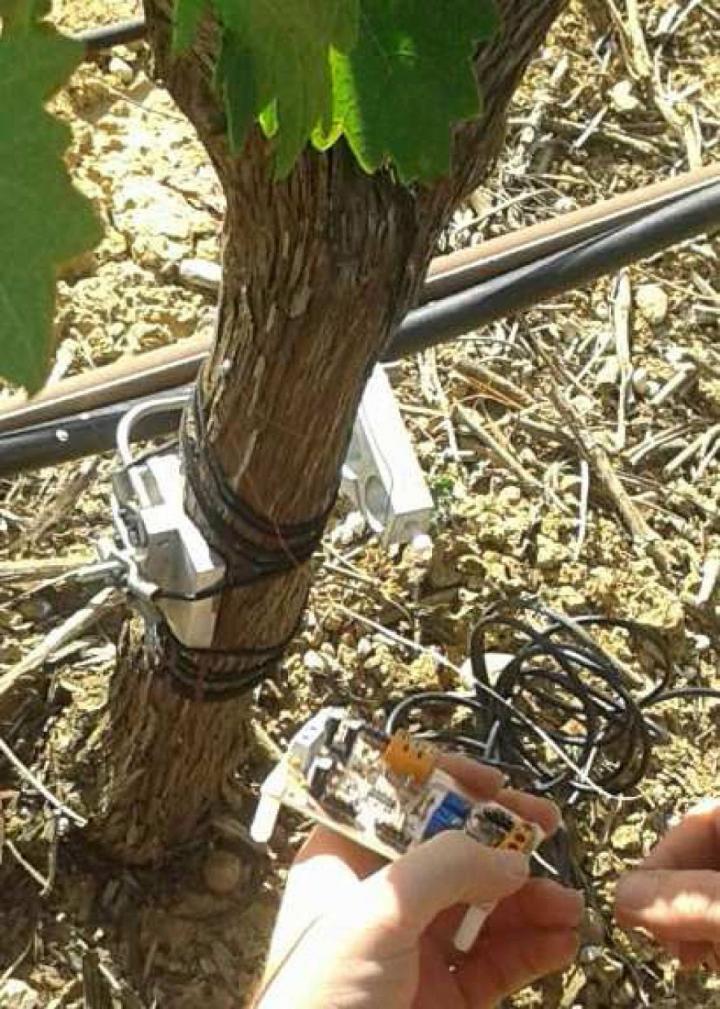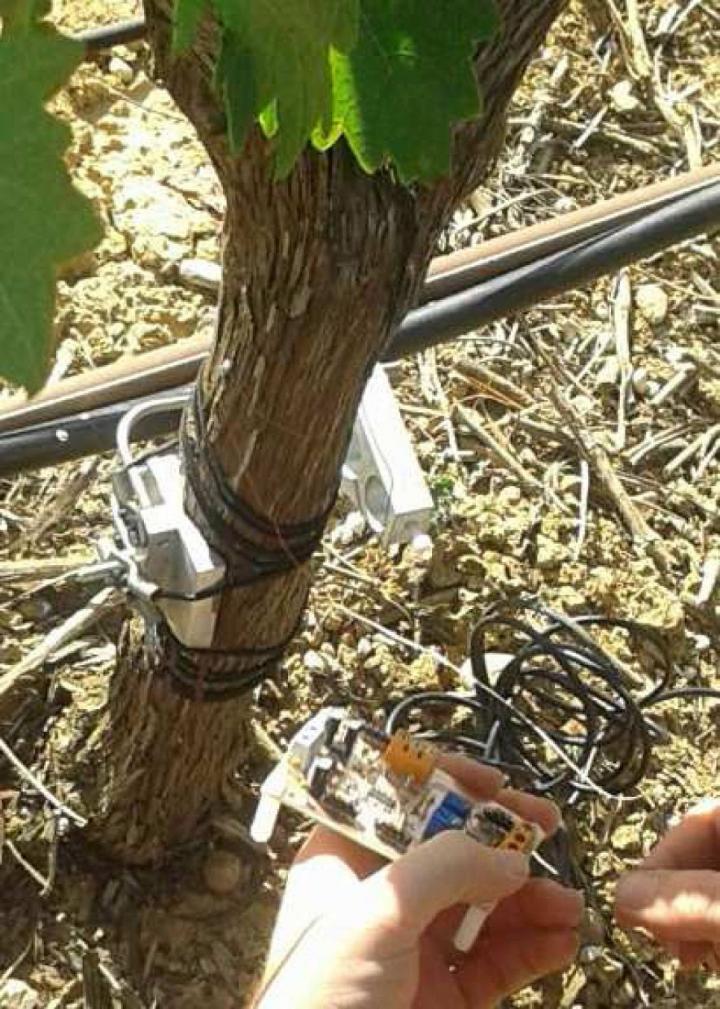
Credit: NUP/UPNA-Public University of Navarre
The first of these sensors provides information without being in contact with the plant and works by capturing information in terahertz, one of the ranges in the electromagnetic spectrum located between microwaves (that a mobile phone or TV need to function) and infrared waves. "These devices transmit a signal in terahertz and measure what proportion of the signal is returned by the trunk of the vine," explained Gonzaga Santesteban-García, lecturer in the Department of Agricultural Production and leader of the research project. "It involves reflectance technology without any contact with the plant. That way, we can check the plant's water status. It is a technique that has not been used before for this purpose". The results of this development have been published in the journals "Frontiers in Plant Science" and "Journal of Infrared, Millimeter and Terahertz Waves".
The researchers have simplified the design of the sensor because a large bandwidth is not needed; it uses planar technology, which allows a high degree of miniaturization and thus considerably cuts the cost per unit, since many of its chips can be obtained commercially at a low price.
The second of the sensors developed is based on a totally different principle. In this case, the aim was to use magnetoelastic sensors to detect the changes that take place throughout the day and night in the size of the trunk or branches of the vine, in other words, they indicate how the vine is growing. Gonzaga-Santiesteban explained that sensors of this type offer two advantages over the classical dendrometers used by some wineries. "Firstly, this is a different technology enabling costs to be reduced and, secondly, we have made it more flexible so that these devices can be fitted not only to the trunk, as until now, but also to different parts of the vine, such as, for example, the cluster," he added. The results of this development have also been partially published in the journal "IEEE Transactions on Magnetics".
###
The development of these devices comes within the framework of the European VITICS Project that had total funding of almost 564,000 euros, co-funded by the European Regional Development Fund and the Government of Navarre. The following NUP/UPNA research groups have participated in this project: Advanced Fruit Farming and Wine Growing, responsible for coordinating the work; Antennas; Physical Properties and Applications of Materials; and Communication, Signals and Microwaves. They also had the collaboration of the following companies: Bodegas Ochoa (in Olite), Enonatura (in Villatuerta) and Cima-NTI (in Huarte-Pamplona).
Media Contact
Oihane Lakar
[email protected]
34-943-363-040
############
Story Source: Materials provided by Scienmag





